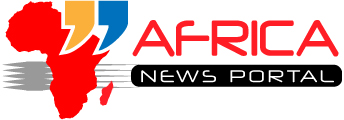Originally published by Pearson on 7 March 2011. Republished by with kind permission.
Goats graze by a riverbank next door and there’s a pungent smell of burning trash in the air, but the children at Bridge International Academy Lunga Lunga don’t even notice. They’re too entranced by a crossword lesson about parts of the body.
“Who can see the word ‘elbow’?” teacher David Kamau asks his students, and seven-year-old Hortensia, dressed in a beige sweater, earns huge cheers from her second-grade classmates by picking the word out from a big crossword puzzle posted on a wall chart.
“Who can see ‘tooth?’” the teacher then asks, and hands shoot up.
While Lunga Lunga’s lesson may not seem extraordinary, the school located in a poor industrial area of Nairobi – and the thinking behind it – most certainly is.
Constructed out of unfinished wood beams, corrugated steel and iron mesh for just $1,800 per classroom, the Lunga Lunga school is part of a network of 22 nearly identical schools established by Bridge International Academies, an organisation that provides quality primary schooling for less than $4 per month.
Pearson is a significant minority investor in Bridge, and views the Bridge model as having potential for providing low-cost schooling in other parts of the world as well.
“Children are taught well here,” says Zipporah Waithera, feeding her four-year-old son Duncan from a green plastic bowl during lunch break. “He knows how to write. He knows how to speak English – not fluently, but he can now speak English.”
Aim to open one new school per day by 2015
Just two years after the first school opened in January 2009, more than 2,700 students are now enrolled across the Kenyan capital.
“We went from zero to 10 schools in the first year, and aim to open 50 schools in 2011,” says Jay Kimmelman, co-founder of Bridge International. “In four or five years we aim to open one new school per day. This enterprise is based on scalability.”
Bridge schools go up fast. On average, a bell rings out for the first day of class just five months after Bridge staff identify land for a new school. The schools are basic: there is no electricity, a big plastic pot is used for purified drinking water, and a latrine on the grounds provides lavatory facilities. The roof of each classroom is double-steeped to provide natural ventilation.
The company now employs 200 people and plans to expand in the next few years to other African countries including Uganda, Ghana and Nigeria, and is also eyeing India.
For Pearson, the Bridge schools are part of recent moves expand its education business in Africa. Pearson in November 2010 announced that it was acquiring a majority stake in CTI Education Group, a South African higher education institution that serves 9,000 students on 12 campuses.
Other Bridge investors include charitable foundations, private individuals and Omidyar Network, a California-based philanthropic investment firm.
Model based on dense population, time spent in class
Bridge is based on very distinctive philosophies for both the economics of education in poor areas, and how students in these areas should be taught.
Bridge builds schools in very densely populated areas following extensive research into land availability and demographics. Bridge’s headquarters in Nairobi are packed with laminated maps and computer screens flashing satellite imagery of the city’s neighbourhoods, so the company’s staff can assess population density. Some Bridge schools are located less than 700 meters apart, and 90% of students live within 400 meters of their school.
Parents pay tuition by mobile phone transfer or by depositing money into a Bridge bank account, as the schools themselves are cashless. New schools break even financially after about 12 months.
The schools were initially built for grades K-3, and have now expanded to K-4. The land is bought with an eye to eventual expansion to grades K-8 at all schools, by building new classrooms onto the existing structures.
The company’s educational philosophy is based on ensuring that students are taught throughout the school day – a measurement it refers to as “time on task.” So students are at school from 7:30 a.m. to 5 p.m. Monday through Friday, with many also attending a half-day on Saturday. School managers – they’re not called “principals” – patrol to ensure that kids are taught right up to the closing bell of each class.
Scripted approach ensures consistency
The schools also feature a very structured approach in which all lessons are totally scripted – word by word, minute by minute. This allows even beginning teachers – following an eight-week training course – to follow the lessons and assess students regularly, and provides a consistent framework for Bridge administrators to evaluate teachers and schools.
The first-grade curriculum book, for example, includes Lesson 14.35.H – entitled “Use of ‘Who’.”
“Because everything is scripted you follow a routine, and the students know what to expect,” says Mr. Kamau, 22, who began teaching at Lunga Lunga in March 2010 after working at a flower exporting company. “When I started, even saying an English word was a struggle for the kids. Now it’s much better for them.”
A performance form is completed each week for every teacher, and teachers get a bonus or have pay docked based on an overall score. The same process governs compensation for school managers, giving them an economic stake in the school’s overall educational performance.
“If teachers underperform I take them aside, and if I don’t see improvement I do it again the next week,” says Patrick Ndege, the 40-year-old school manager at the Lunga Lunga school.
Idea originated during honeymoon research
Bridge International Academies stem from a couple of research projects conducted by Mr. Kimmelman, 33, a former educational software entrepreneur, and his wife Shannon May, 34, a cultural anthropologist, both Americans by birth.
They moved to northern China in 2005, near the Korean border, where they studied various sectors in which scalability can benefit the poor, including finance, agricultural economics and education, and decided they could make the most difference in schooling.
The couple then spent half their honeymoon examining primary schools in Africa, and quickly made a surprising discovery.
“We realized that every time we drove up to a school the kids all seemed to be at recess,” Mr. Kimmelman recalls. “Children were not learning because no one was teaching them, as half the teachers weren’t in school. Most of the private schools were sole proprietors, so there was no consistency.”
So Mr. Kimmelman and Ms. May, along with Bridge’s third co-founder Phil Frei, 35, a Swiss-Canadian, decided that Bridge would be based on kids being in class and taught throughout the lesson.
Lunch cooked up by local families, providing income
When he first took the school manager’s job, Mr. Ndege went door to door with flyers printed in Swahili to advertise the new school, but word-of-mouth has now taken over.
“Parents see a difference in their kids,” he says. “Now the parents know that kids learn here. We don’t have to do much marketing.” Enrollment at the Lunga Lunga school went from zero in January 2010, to 185 in October 2010, to 300 by February 2011.
At lunchtime, many students pay a small fee for lunches cooked up and brought to the school by families living nearby, which provides employment for the local community. The meal on a recent Friday was rice with cabbage, and many parents of Lunga Lunga students wander over to the school at lunchtime to eat with their children.
“The children are taught well,” says Risper Warwenu, whose four-year-old son Ephantus enrolled at the school last year. “He can now write in English. He could not write before.”
Asked if he likes school, her son shyly hides his face, then nods a big smile.















